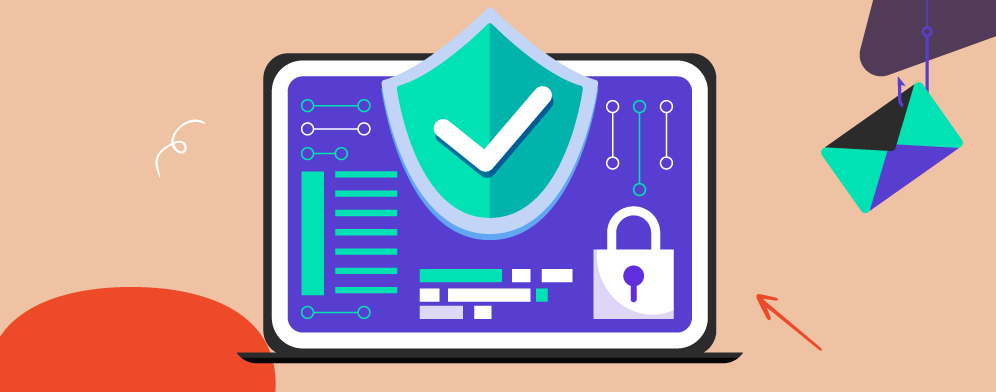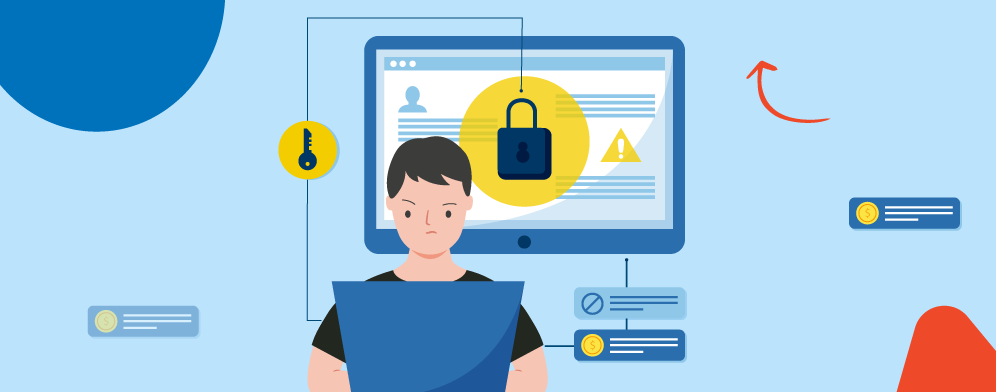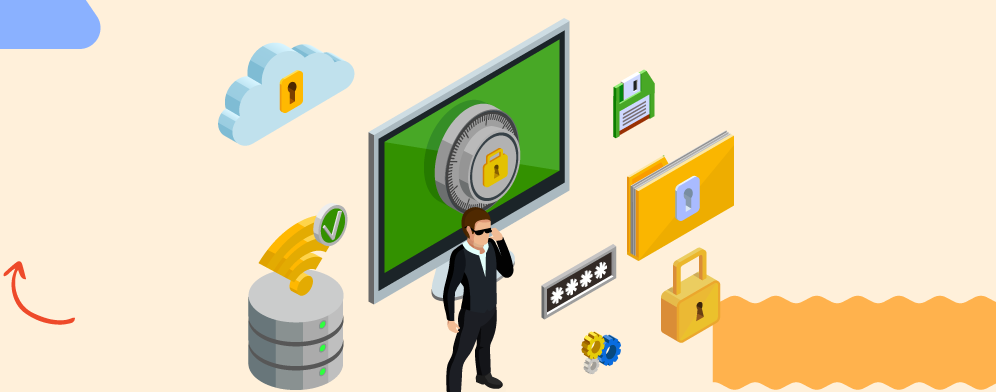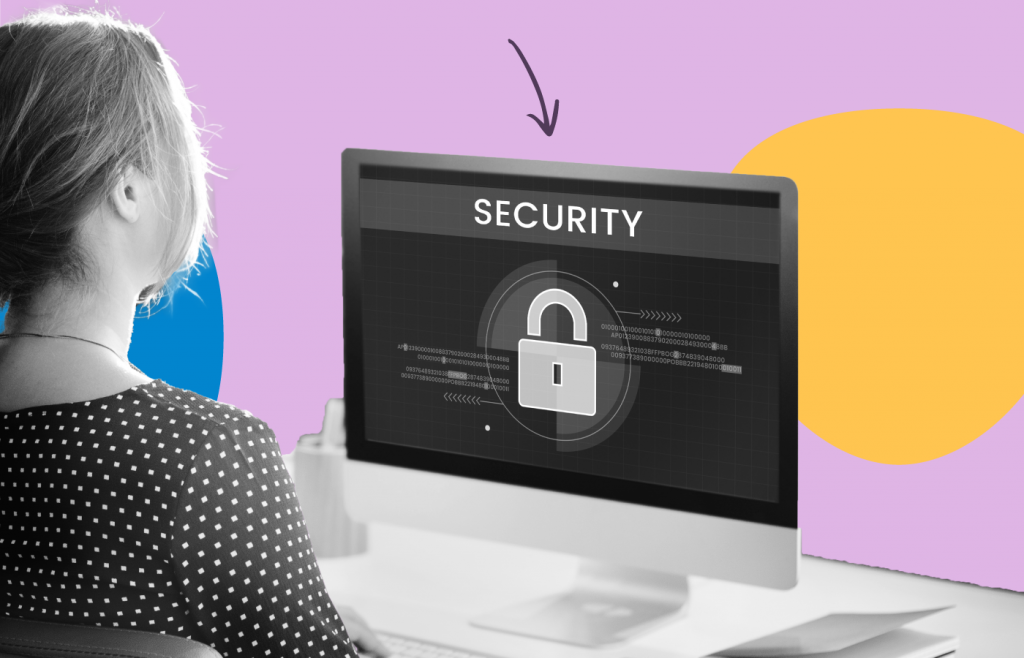1. Introduction
The pandemic may have receded, but its ripple effects continue transforming various aspects of our lives, particularly how we work. Remote work has shifted from a luxury to the new standard, significantly changing industries across the globe. However, this shift comes with its own set of challenges. According to recent data by Statista, as of 2023, a significant 72 percent of respondents worldwide still hold substantial concerns regarding the online security risks associated with employees working remotely.
The big question lies in knowing the types of cybersecurity risks remote workers are vulnerable to and the best measures to take to stay safe from these risks. This article will help with that.
2. Understanding the Cybersecurity Threats in Remote Work

Understanding the cybersecurity threats tied to remote work is essential in an era where many conduct their professional lives from the comfort of their homes. The digital landscape is rife with various risks that can compromise the safety and security of both personal and corporate data. Here are some common remote working cybersecurity risks you should know:
2.1 Phishing Attacks
This is a situation where hackers pretend to be real businesses with the intention of deceiving employees into revealing sensitive information. These attacks usually appear as harmless emails or text messages, but they are designed to be deceptive and dangerous.
2.2 Malware
This harmful software can infiltrate your computer without you even knowing. It takes various forms, including viruses, ransomware, and spyware. For example, ransomware can block your access to important files and demand payment to regain control.
2.3 Insecure Wi-Fi Networks
When remote employees use public or unsecured Wi-Fi networks, cybercriminals can easily intercept and misuse their data.
2.4 Unsecured Endpoints
Often, remote employees use their personal devices for work. These devices may not have the same level of security as company devices, making them easy targets for hackers.
3. Cybersecurity Best Practices for Remote Workers

It is important to understand the potential cybersecurity threats and equip ourselves with the best practices to mitigate these risks. This section aims to shed light on the various proactive measures remote employees can take to safeguard their online activities.
3.1 Use SSL Certificate in All Remote Work Connections
Implementing SSL certificates is a fundamental cybersecurity practice for all remote work connections. SSL, which stands for Secure Sockets Layer, is a technology that encrypts the connection between a user's web browser and a server, preventing unauthorized access to sensitive information.
A vital aspect of SSL implementation is using a suitable SSL certificate type like multi domain SSL, single domain SSL, Wildcard SSL Certificate. This is particularly beneficial for businesses with multiple subdomains under one primary domain, as it allows for the secure connection of unlimited subdomains with a single certificate. This ensures that every part of a company's online presence is secure, providing additional protection for remote workers accessing these subdomains.
Fortunately, implementing this SSL protocol does not have to be expensive. Reliable SSL resellers offer low cost or Cheap Wildcard SSL, multi domain SSL Certificates or other SSL certs. These affordable solutions can provide high encryption and security, making them an excellent investment for businesses aiming to bolster their cybersecurity practices.
In a remote work environment, where employees connect from various locations and on various devices, using an SSL certificate is not only a best practice but a requirement. It serves as the first line of defense, ensuring secure, encrypted connections that can protect valuable corporate data from cyber threats.
3.2 Use of strong, unique passwords

Passwords serve as the primary line of defense in protecting our digital identities and securing access to critical data. The effectiveness of this defense heavily relies on the complexity and uniqueness of the passwords you use. A strong password usually consists of a combination of uppercase and lowercase letters, numbers, and special characters.
It's also recommended to avoid using predictable information such as birthdays or names. Moreover, using unique passwords for different accounts prevents a domino effect; if one account is compromised, the others remain secure.
Password managers can assist in creating and storing these robust, unique passwords securely. Remember, a strong and unique password isn't just a password; it's a shield that protects your digital self in the vast realm of the internet.
3.3 Regular system and software updates
Just as we need to routinely service our cars to keep them running smoothly, our computer systems and software require regular updates to perform optimally and securely.
These updates often include patches for security vulnerabilities that cybercriminals could exploit. By delaying or ignoring updates, we leave our systems exposed to potential cyber-attacks. Furthermore, updates often come with performance improvements and new features, contributing to a more efficient and productive work experience.
So, whether it's your operating system, productivity software, or antivirus program, ensure you're regularly updating them. Turning on automatic updates, where possible, is a simple yet effective way to stay on top of this task. Regular system and software updates are like health check-ups for digital devices, keeping them secure and in prime condition.
3.4 Employee Training and Awareness

Cybersecurity is an ever-changing battleground where new threats constantly arise. Employees serve as the initial line of defense, making it vital for them to stay informed about potential risks and the best practices to handle them.
Regular training and awareness programs equip employees with the skills to identify phishing attempts, practice safe browsing, and grasp the significance of safeguarding sensitive information. Importantly, this isn't a
one-off event but an ongoing commitment, with regular refreshers to ensure teams stay ahead of the ever-evolving cyber threats.
3.5 Strict BYOD Policies
In the remote work environment, the lines between personal and professional devices often blur. This necessitates strict Bring Your Own Device (BYOD) policies.
These guidelines dictate what types of devices employees can use for work, the level of access to company data they're allowed, and the mandatory security protocols they must adhere to. Implementing stringent BYOD policies helps companies retain control over their data, even when accessed from personal devices, thus ensuring data integrity and security.
3.6 Leverage the Power of Virtual Private Networks (VPNs)
Virtual Private Networks, commonly known as VPNs, establish a safe and protected pathway for online activities. They effectively hide users' locations and safeguard the data transmitted through encryption.
VPNs are an essential tool for remote workers who may be using public or unsecured networks. They ensure that sensitive company information remains secure and confidential, regardless of where employees work, providing additional protection against cyber threats.
3.7 Proper digital hygiene and threat awareness

Just as good personal hygiene practices are vital for physical health, maintaining proper digital hygiene is key to cybersecurity. This includes regularly updating and strengthening passwords, being mindful of privacy settings on social platforms, and avoiding suspicious links or downloads. Furthermore, keeping yourself updated about the newest cybersecurity risks and learning to recognize them can greatly decrease the chances of experiencing a cyber-attack. Practicing good digital habits is crucial for ensuring a safe online environment for individuals and organizations.
3.8 Multi-Factor Authentication
Multi-factor authentication (MFA) is a vital security measure for remote work settings. With MFA, users must provide two or more verification factors to access resources like applications, online accounts, or VPNs. These verification factors could be a password, a smartphone app, or biometric data like a fingerprint or facial recognition.
By requiring multiple verification forms, MFA significantly increases protection against cybercriminals trying to access your data. Even if a
password gets compromised, the attacker still can't access your account without the additional factor of ensuring your account remains safe. This is especially crucial for remote work, where employees connect from different networks and devices. Implementing MFA can greatly enhance your cybersecurity, acting as an extra checkpoint to keep your data secure in the digital world.
4. Conclusion
The move towards remote work has made businesses more vulnerable to cybersecurity threats. These risks include phishing, malware, insecure Wi-Fi, and unsecured endpoints. To mitigate these, best practices include using SSL certificates for secure connections, creating strong, unique passwords, and performing regular system updates. Employee training, strict BYOD policies, using VPNs, practicing good digital hygiene, and implementing multi-factor authentication are also critical. This holistic approach will protect personal and corporate data from cyber threats in the remote work environment.
 Interested in Virtual Team Building Events?
Interested in Virtual Team Building Events?





















